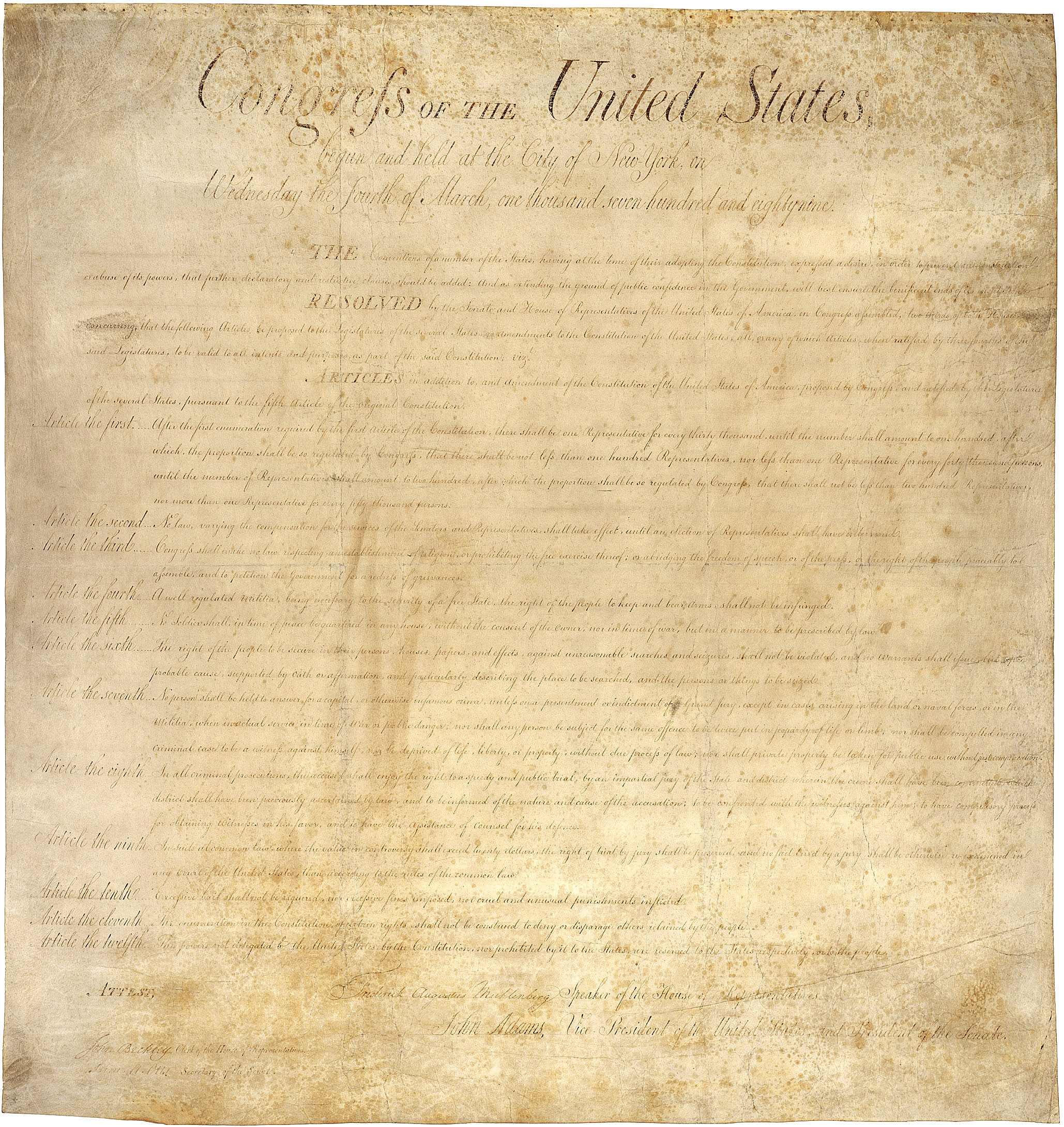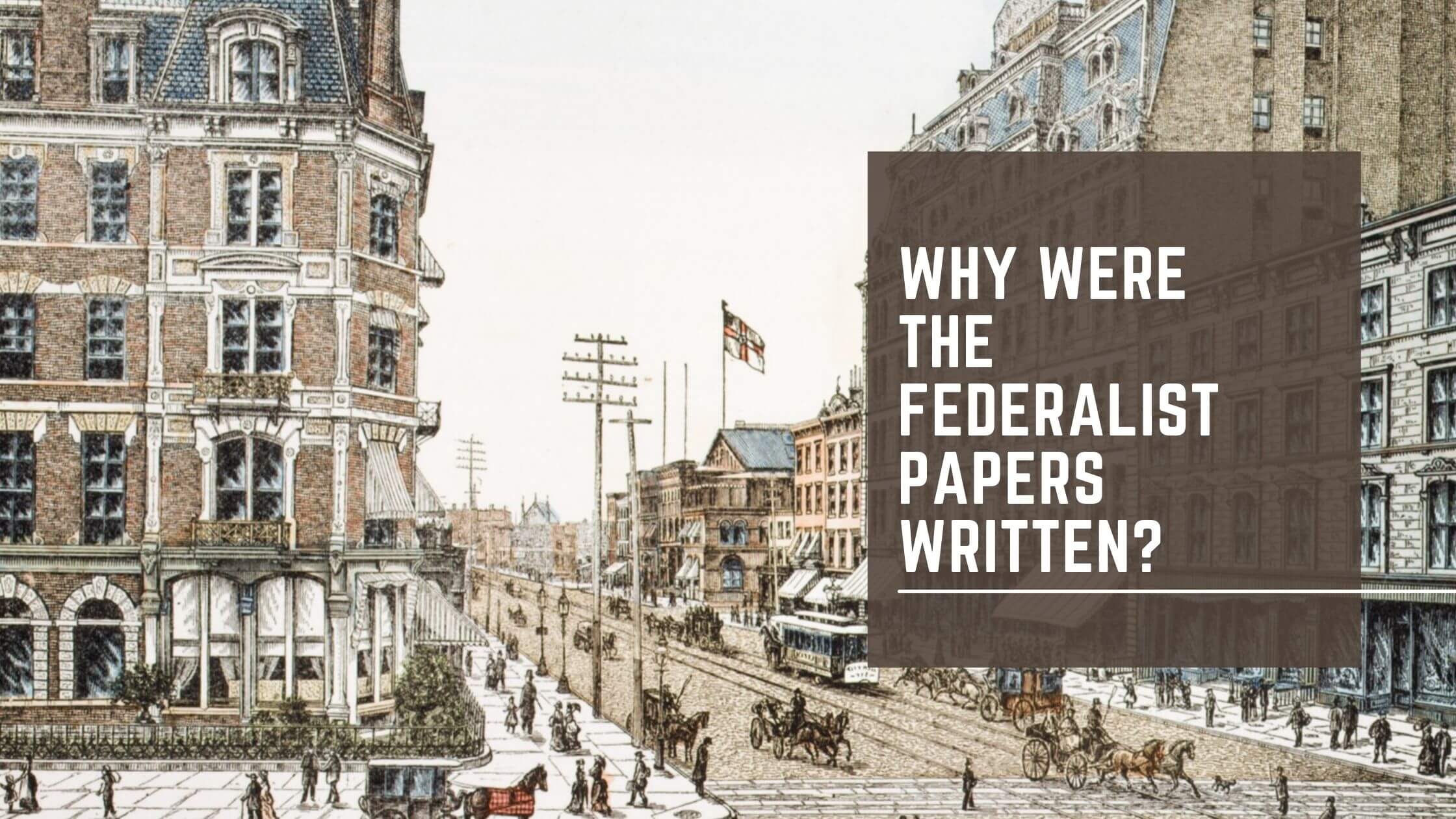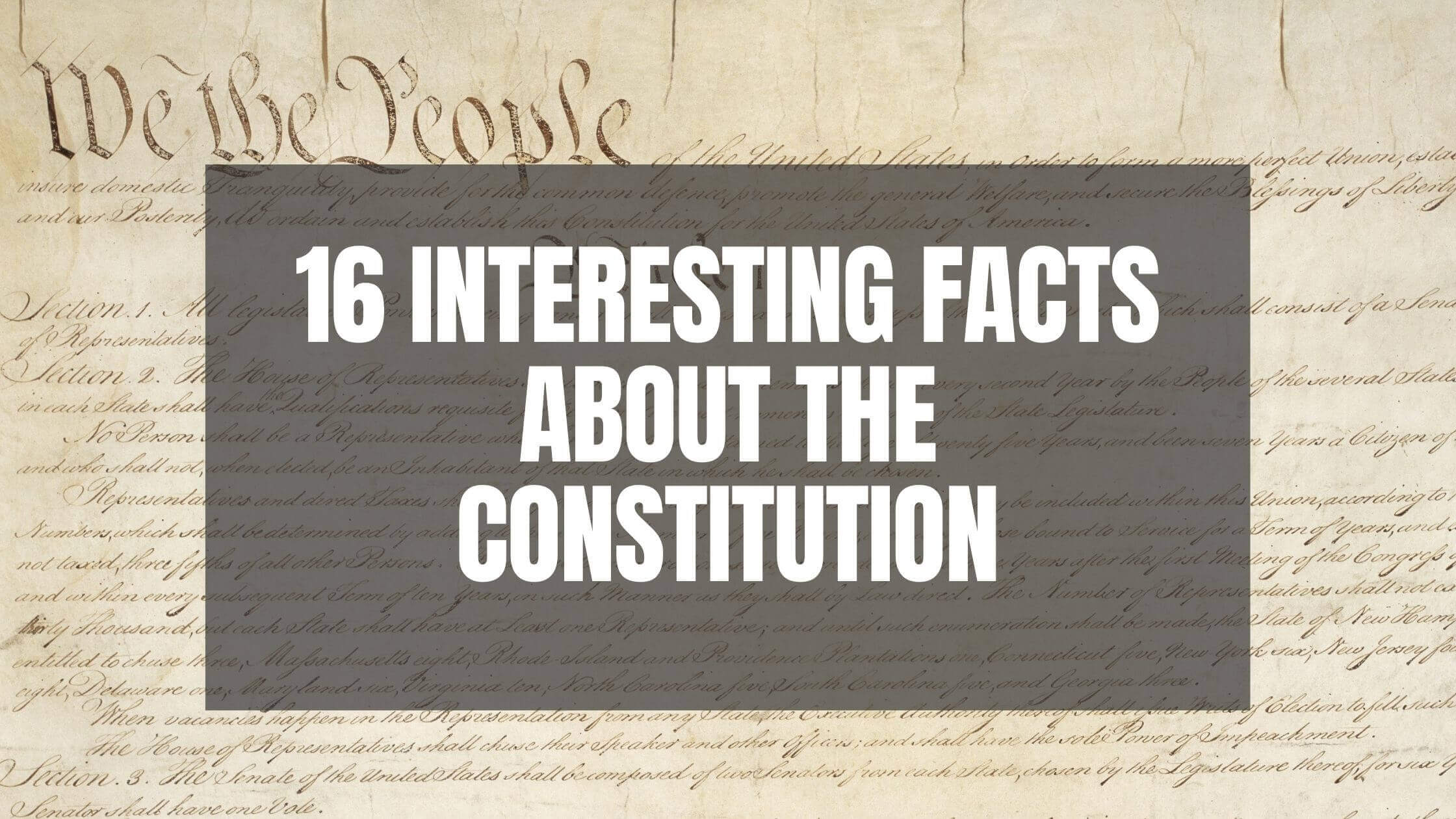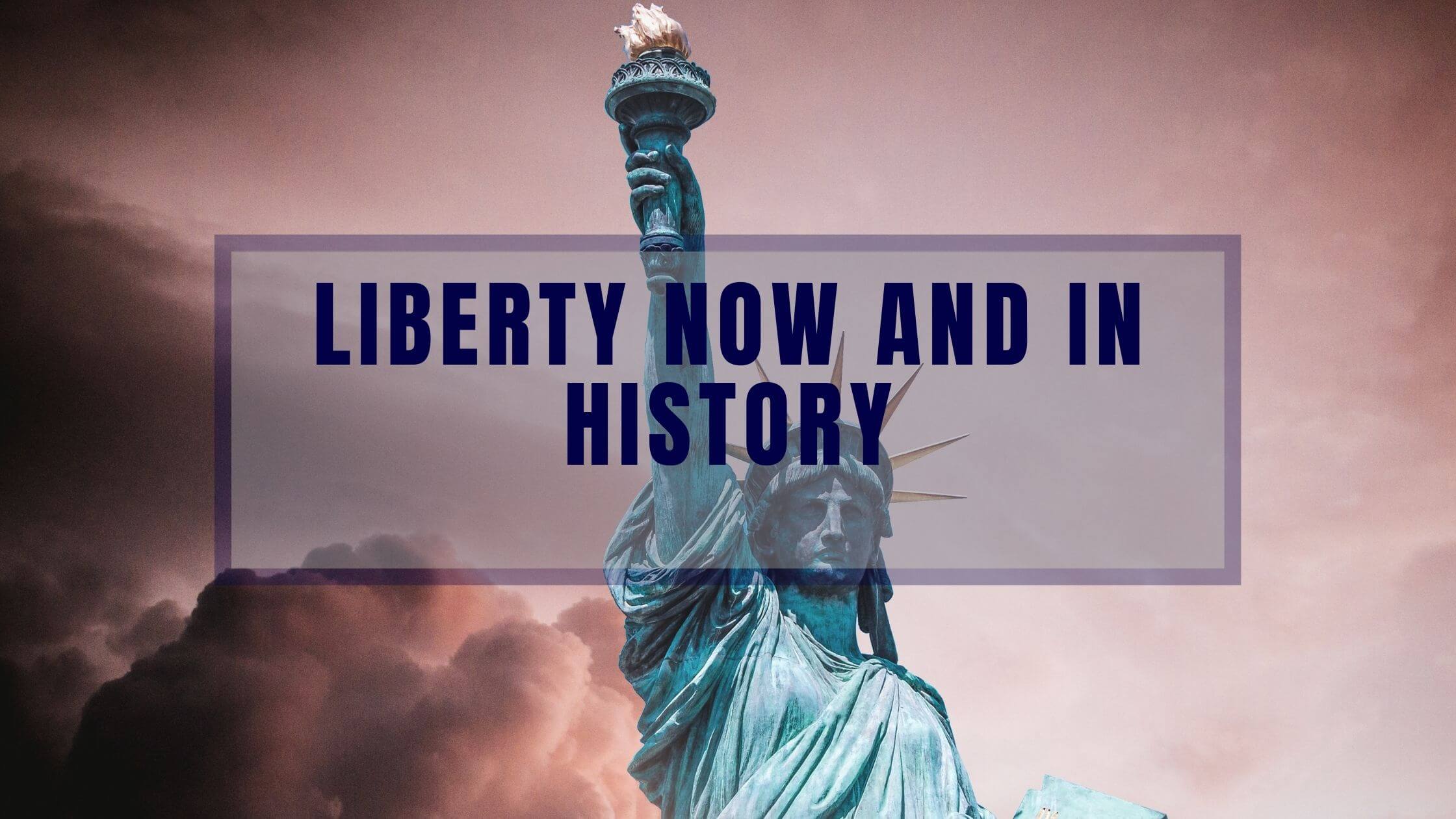Table of Contents
ToggleImportance of the Federalist Papers
The Constitution of the United States sits behind glass in the National Archives, detailing the new powers of the United States and providing a basis for the structure of its national government. We often turn to these words to determine whether acts of government are constitutional and see them as an ever-important foundation for the nation. There were disputes about the ideas following the first draft, and the Anti-Federalist states refused to sign. At this time, the Federalist Papers appeared in New York to try to sway opinion.
The Federalist Papers are now regarded as a key historical document that provides much insight into why the Federalists believed what they did, how they convinced others to swing to their way of thinking, and the ratification process. Ratification of the United States Constitution did not happen overnight, and there were many states that were reluctant to do so.
New York was a leading influence here, and the Federalists knew that they had to try to shift the balance to get things moving. So, the collective of Publius was born, and its writers created a series of essays to bring New York on board and protect the United States further. So, what were the aims of the Federalists and those behind the papers, and why target New York?
The Creators of the Federalist Papers
When we talk about why the Federalist Papers were created, we have to take a moment to consider the three men responsible. At first, the Federalist Papers were submitted under the alias of Publius, a clever tactic for anonymity for the three authors. They were Alexander Hamilton, who wrote the largest portion of the papers, James Madison, and John Jay. All three were influential in forming the new government system and were determined to see the document fully ratified.

John Jay may not have been part of the Constitutional Convention, but he was a former President of the Constitutional Congress and a future Chief Justice. His experience and values meshed well with those of Hamilton and Madison, and he was a New York native alongside Hamilton.
Hamilton and Madison were delegates at the Constitutional Convention, with Madison taking a much more dominant role in shaping the conference and being the first to arrive. They would both go on to be part of the Committee of Style that created the final draft of the United States Constitution. Following ratification, they also held major roles in government.
Federalists vs. Anti-Federalists
The problems seen in creating the Constitution in its final form and the ratification process came from tensions between Federalists and Anti-Federalists. This began early on as the delegates from the 12 attending states debated the best form of government. Alternative plans were drawn up that leaned towards different beliefs. A compromise was necessary before they could begin to draft the new Constitution in full and come together to work on ratification.
The main focus of those on the Federalist side was for a clear, centralized government with all the power held in a national capital. The idea was that these federal powers would be kept in line with a series of checks and balances, but that they had a stronger say over laws, taxation, and more. There were some questionable viewpoints among them, with many advocating for the indirect election of government officials and longer-term limits for officeholders.
Anti-Federalists had problems with many of these proposals. The main concern was that such centralization would weaken state governments too much and lead to problems for citizens. There was also the fear that the ideas for state representation worked against those with small populations and that the system wasn’t fair. They wanted states to have a greater say and were unsure about proposals for the new capital.
A Reluctance To Agree to the Constitution’s Terms
Major obstacles prevented the Constitution from being ratified, as some of the remaining states were reluctant to sign. There were fears that some of the terms and the past behaviors of these regions would work against the Federalists. The slow process hampered their attempts to get the document before Congress and to create the government system they desired. Some states wouldn’t sign at the convention.
One problem state was South Carolina, which was holding back on signing and whose history with slavery was at odds with the sentiment of the Constitution. Framers feared that this might be a deal-breaker in some way. Then there was Connecticut, which had openly spoken out against the Constitution in this form and was not keen to change its mind. Another concern was Rhode Island, the smallest but most rebellious of the lot, which didn’t even send any representatives to the Constitutional Convention.
Above all of these, in the minds of the Framers, was New York.
Main Aim of the Federalist Papers
New York meant more to the Framers as an ally and leading figure in this new United States because of its valuable attributes such as its wealth, population, and geographical attributes. They couldn’t afford for New York to break away and needed to convince them to sign.
However, New York was largely Anti-Federalist due to some of the common issues surrounding centralized government and additional concerns about a number of clauses. For example, the Federalists believed that a centralized government with better taxation methods and debt collection could, in turn, pay off their debts and become more independent.
The problem for New York was that the idea of calling in funds for Revolutionary War debts was potentially damaging. So, it was essential that those with enough skill and influence worked to change that mindset and convince New Yorkers that they would be better off within this system than standing against it.
Putting Forth a Strong Case for the Constitution
Because the ratification process had stalled and New York was a tougher nut to crack, the Federalists needed more than just the usual talks with political leaders to make a point. The answer was to create a series of essays that could talk to everyday people as much as those with a stronger interest and active role in politics. Alexander Hamilton, John Jay, and James Madison wrote the long-running series between October 1787 and August 1788 for two leading New York newspapers.
Their approach made a lot of sense when it came to dealing with the public and swaying opinions. It would not have been so effective if they simply release a solitary statement in October following Congress’s approval of the document. Regular installments meant that the cause remained in the forefront of readers’ minds, and even if one subject wasn’t to their liking, another, later on, could be all they needed to change opinion.
If the writer were able to gradually break down the general Anti-Federalist sentiment in the state of New York as a whole, there was a better chance of convincing those in charge to rethink. After all, the New York convention wanted what was best for their people.
The Federalist Papers Great Detail
Each of the three writers under the Publius name worked on different sections of the papers. There would be long blocks spaced out over weeks and even months where one writer would state a case. They would go into great detail on the reasons why certain ideas in the Constitution were worth defending. This then helped convince the opposition that there was some worth in these changes.
A lot of the essays discussed the structure of the new United States Government and the powers of Congress, including pieces on foreign affairs, financial implications, and more. The goal here was to ease the minds of those fearing negative repercussions if the United States Constitution went ahead as planned. With so much to discuss and many educated men sharing the task, the serial went on for a considerable time. There were 85 essays in total if you include the opening and closing statements.
At the same time, the trio doubled down on their ideas by criticizing the Articles of Confederacy. One of the best ways to show that the new ideas were worthy and better for the people of New York was to highlight the negative aspects of the current system. Some were swayed but not enough and another tactic was required.
The Difficulty in Swaying New York
The response from New Yorkers to the Federalist Papers wasn’t as positive as the authors had hoped. There was still a strong Anti-Federalist sentiment from those that weren’t convinced by the new proposals. After the series was complete, there was still a large turnout at the New York Conference for the Anti-Federalist side, and many opposed signing.

Get Smarter on US News, History, and the Constitution
Join the thousands of fellow patriots who rely on our 5-minute newsletter to stay informed on the key events and trends that shaped our nation's past and continue to shape its present.

One of the obstacles here was the issue of the Bill of Rights. Anti-Federalists were keen for this to be a part of the Constitution and had been during the original Convention. There was a divide between those defending the unwritten rights in the Constitution and those demanding a clear breakdown of the rights and liberties of their citizens. The fear was that by giving in to the Federalists they would be signing away the freedoms of their residents.
This was something that Hamilton, in particular, refused to budge on, and he wrote Federalist 84 to explain why the Bill of Rights was unnecessary. However, the Federalists made a deal that Congress would start on a Bill of Rights amendment straight away if the remaining states ratified. This was the turning point, and New York signed.
How Successful Were the Federalist Papers in Their Aims?
This is a big question that is difficult to answer. The result suggests that the scheme didn’t go entirely to plan. Ideally, the Federalists would have been able to shift opinion to a higher degree and avoid the need for the Bill of Rights. This wouldn’t have been better for the country, but it would have been a more significant victory in their eyes. The small margin on the final vote and that compromise were indeed a blow to all in Publius.
On the other hand, we have to consider what might have happened had they not written any essays. Also, would the result have been worse without this ongoing series in the New York newspapers? The essays had the opportunity for a high readership on a weekly basis for several months. More generally, the topics and the Federalist agenda would have been key discussion points in households and establishments in New York City.
The Publication of The Federalist
When talking about the success of the Federalist Papers in its aims, we also have to mention the alternative publications. As time wore on, the decision was made to create a bound edition of the essay that brought everything together in one book. The Federalist was now available to read and study in greater depth and add to a personal library. There were only 500 printed, but it secured more gravitas to the venture.
The other benefit of this publication was that Hamilton could go in and make corrections and amendments where necessary. It became a final draft with the potential of persuading people a little further. At this time, the Publius name remained in place as anonymity was still essential.
That anonymity disappeared in 1818 when a new edition came out as there was no longer any need to stay hidden. This final edition also gave Madison the chance to make his own corrections and provide the right attributions for the individual pieces. There is still dispute over which were purely Hamilton’s and which were co-authored. Today, we can review these papers and gain great insight into their views of the men that wrote them and their attempts to steer the course of history in this divisive period.












One Response
Any idea what was “revised and corrected” in the new essays published after the constitution was ratified?
I do.
BOTH versions of the essays are just a subset of this literature.
“History may distort truth, and will distort it for a time, by the superior efforts at justification of those who are conscious of needing it most. Nor will the opening scenes of our present government be seen in their true aspect, until the letters of the day, now held in private hoards, shall be broken up and laid open to public view. What a treasure will be found in General Washington’s cabinet, when it shall pass into the hands of as candid a friend to truth as he was himself!”
Some of the framers were counting on the 12 articles being ratified in the convention. When the Bill of Rights changed to 10 amendments the essays had to be revised and corrected. Benjamin Franklin is singularly responsible for the existence of these 1000+ letters. They prove a constitutional legacy. There is a certain paragraph in Federalist Essay 84 that doesn’t exist in original essays. It makes mention of a “declaration”.